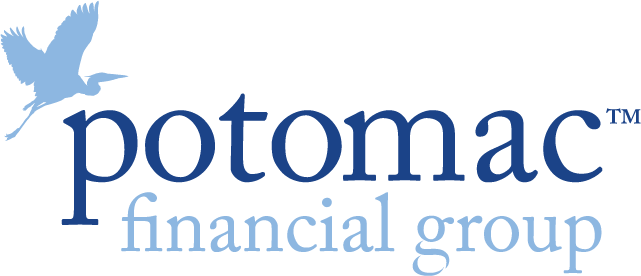What can investors expect from the financial markets this year? Chief Investment Officer Larry Adam offers his perspective.
Last year was challenging for investors, marked throughout by notable market volatility. But that isn’t uncommon for an economy that’s entered the late phase of the business cycle. We’ve enjoyed an unprecedented economic rally since the Great Recession ten years ago – but with monetary stimulus, fiscal stimulus, economic growth, employment growth and earnings growth likely to decelerate in 2019, the credibility of this record-approaching expansion will be questioned.
Below, we’ve provided our views and insights for the U.S. economy and major global asset classes in 2019. The bottom line: the late-cycle environment we envision does not mean the end of the cycle, and this perspective frames our optimistic yet tempered views for the upcoming year.
1. U.S. Economy Achieving Record Eclectic Expansion
Credibility Challenge: Can the economy maintain its momentum with decelerating monetary and fiscal stimulus?
With little sign of recession, we foresee the current expansion notching record duration in July and continuing to grow – albeit more slowly – at an above-trend pace. Expect 2019 GDP growth of 2.4%.
2. One Step at a Time for the Federal Reserve
Credibility Challenge: Will the Fed engineer a policy error and overtighten?
We expect the Fed to remain “data dependent” and flexible as inflation is contained and global growth challenges mount. Expect one or two interest rate hikes in 2019.
3. Increased Volatility Keeping Investors on Their Toes
Credibility Challenge: Investor sentiment will be confronted by a return to a higher volatility regime, which will question the success of the “buy the dip” mentality.
The low probability of a recession and positive performance expectations for most asset classes should provide more opportunities for investors of risk assets as well as ample occasions for active managers to outperform.
4. Bearing Down on Bonds and Cashing In
Credibility Challenge: Bonds, in aggregate, have struggled as interest rates moved higher and spreads widened. Is the 30-year bond bull run over? Is cash no longer unproductive?
While a healthy economy and “quantitative tightening” should place upward pressure on interest rates, the reset higher in yields and spreads makes bonds only incrementally more attractive. Expect the 10-year Treasury yield to move to 3.2% and the yield curve not to invert. With short-term rates likely to move slightly higher, cash is now a viable alternative.
5. Minding the (Equity) Gap
Credibility Challenge: Can U.S. corporate earnings move higher without additional tax cuts? Can a continued ascent in earnings outshine “peak earnings growth”?
U.S. corporate earnings should move higher on the back of modest economic growth, solid corporate confidence and buybacks. While earnings growth will decelerate to single digits, 2019 will not be the peak dollar amount for earnings. Higher earnings support our 2,960 S&P 500 target.
6. Favoring Cyclical Sectors
Credibility Challenge: The significant outperformance of cyclical sectors over the last several years has prompted investors to expect a shift to defensive sectors.
Leverage to economic growth, superior earnings growth, attractive valuations, higher shareholder value dynamics (e.g., dividend growth and buybacks) and less sensitivity to rising interest rates encourage us to be biased to the cyclical sectors – particularly technology, energy, industrials and healthcare.
7. International Intrigue Emerging
Credibility Challenge: International equity investors have experienced inferior performance (vs. the U.S.) for multiple years, compounded by a strengthening dollar. Will international equities continue to be a drag on portfolios?
While attractively valued, developed international markets will likely continue to struggle to outperform the U.S. as political drama intensifies. We favor emerging markets, particularly in Asia, which could benefit from a trade deal, a less-aggressive Fed and stabilization of the dollar.
8. Dynamite Dollar Dynamics Drying Up
Credibility Challenge: Can the U.S. dollar maintain its historically long bull market rally?
A less aggressive Fed, less upside surprise potential for the U.S. economy and the fading of some European political risks favor at least stability for the euro. While the dollar is not expected to weaken significantly, it likely peaked in 2018.
9. Oil Leaping Higher
Credibility Challenge: Can OPEC rally oil prices after the 40% decline from recent highs?
The pullback in oil prices should begin to reduce U.S. production as producers become disincentivized. Global oil market forecasted to become undersupplied in 2019 due to OPEC cuts and Iran sanctions. Expect oil to rally to $62 per barrel by year end.
10. Technology: A Sustainable Revolution
Credibility Challenge: The technology sector’s recent correction has called into question the sustainability of its leadership quality.
The recent pullback provides an attractive entry point into a sector that continues to grow its earnings and expand its disruptive forces to almost every sector of the economy.
Larry Adam, CFA, CFP®, CIMA®. All expressions of opinion reflect the judgment of Raymond James & Associates, Inc., and are subject to change. There is no assurance any of the trends mentioned will continue or that any of the forecasts mentioned will occur. Economic and market conditions are subject to change. Investing involves risk including the possible loss of capital. International investing involves additional risks such as currency fluctuations, differing financial accounting standards, and possible political and economic instability. These risks are greater in emerging markets. Companies engaged in business related to a specific sector are subject to fierce competition and their products and services may be subject to rapid obsolescence. U.S. government bonds and Treasury bills are guaranteed by the U.S. government and, if held to maturity, offer a fixed rate of return and guaranteed principal value. U.S. government bonds are issued and guaranteed as to the timely payment of principal and interest by the federal government. Treasury bills are certificates reflecting short-term (less than one year) obligations of the U.S. government. The yield curve is a graphic depiction of the relationship between the yield on bonds of the same credit quality but different maturities. The S&P 500 is an unmanaged index of 500 widely held stocks. It is not possible to invest directly in an index Past performance may not be indicative of future results

